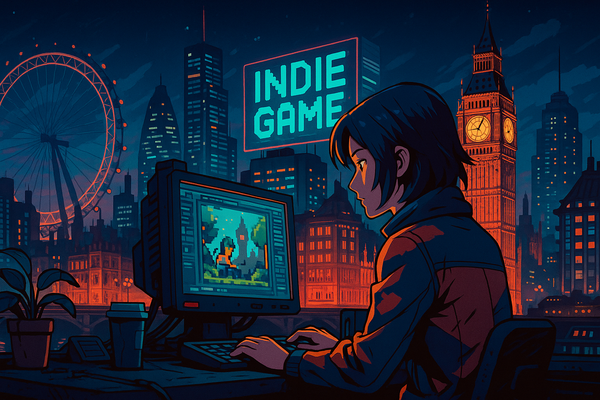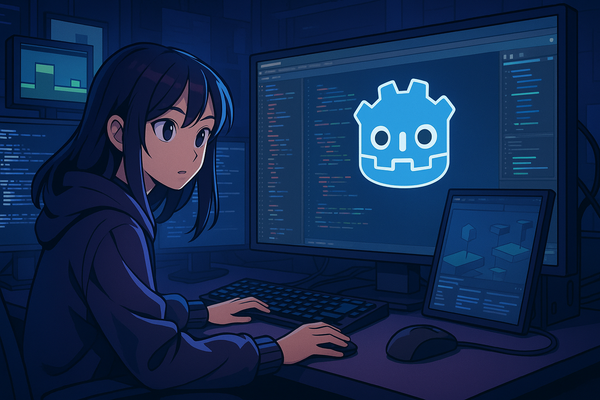Why quality over quantity is the key to success in indie game development
The debate between quality and quantity is more than just an abstract concept—it's a critical decision that can determine the success or failure of a project. While the allure of producing multiple games in a short span might seem tempting, especially for studios trying to build a portfolio or generate quick revenue, the long-term rewards of focusing on fewer, higher-quality titles far outweigh the short-term gains.
The value of quality in indie games
Indie games occupy a unique space in the gaming industry, often celebrated for their creativity, innovation, and ability to push the boundaries of traditional game design. Unlike AAA titles, which often rely on established formulas and massive budgets to ensure commercial success, indie games thrive on originality and craftsmanship. This emphasis on quality is crucial for indie developers who want to create experiences that resonate deeply with players and stand out in an increasingly crowded market.
Quality in indie game development is not just about having polished graphics or bug-free code; it's about creating an experience that engages players on a profound level. Games like Hollow Knight and Undertale are prime examples of how a focus on quality can lead to cult classics. These games didn’t just offer solid gameplay; they delivered immersive worlds, compelling narratives, and innovative mechanics that left lasting impressions on players (The Indie) (Fungies).
The pitfalls of prioritizing quantity
While releasing multiple games quickly might seem like a viable strategy, especially in a market driven by content-hungry players, this approach can lead to several pitfalls. The most significant risk is the dilution of a developer's creative vision. When the focus shifts to producing more games in less time, the level of detail, innovation, and overall quality can suffer. This often results in games that feel rushed, lack depth, or fail to offer anything new to the player base.
Moreover, the pressure to release multiple titles can lead to scope creep—a situation where a project’s objectives grow beyond the original plan, leading to unmanageable workloads and, ultimately, subpar games. Many indie developers have fallen into this trap, only to see their games fail to make a significant impact, both critically and commercially (eXputer.com).
Strategic planning: The backbone of quality development
Achieving high quality in game development starts with strategic planning. This involves not just conceptualizing a unique game idea, but also meticulously planning every aspect of the game—from character development and level design to narrative structure and player interaction. For indie developers, this process often begins with refining the initial concept, ensuring it is not only original but also feasible within the constraints of their resources and time.
Prototyping is a critical step in this process, allowing developers to experiment with gameplay mechanics, test user interfaces, and identify potential issues early on. By iterating on these prototypes, developers can refine their ideas, ensuring that the final product is polished and engaging. This iterative process, although time-consuming, is essential for creating games that offer a seamless and enjoyable experience.
The role of playtesting and feedback
One of the key elements of achieving quality in game development is playtesting. Engaging players, friends, and fellow developers to test the game at various stages of development provides invaluable insights. This feedback loop allows developers to identify bugs, improve gameplay mechanics, and refine the user experience. Importantly, it helps developers understand how players interact with the game, which aspects they enjoy, and which parts need improvement.
For indie developers, who often work with limited resources, this feedback can be the difference between a game that flops and one that succeeds. Games like Celeste benefited immensely from rigorous playtesting, which helped the developers fine-tune the challenging yet rewarding gameplay that became the hallmark of the game.
Long-Term benefits of prioritizing quality
The benefits of focusing on quality over quantity extend beyond the immediate success of a single game. High-quality games build a developer's reputation, creating a brand associated with excellence and innovation. This reputation can lead to increased visibility in digital storefronts, more positive reviews, and a loyal fanbase that eagerly anticipates future releases.
Moreover, quality games have a longer shelf life. A well-crafted game continues to attract players long after its release, often becoming a staple in the indie gaming community. For instance, Hollow Knight continues to be popular years after its release, with fans eagerly awaiting its sequel. This longevity not only brings in sustained revenue but also solidifies the developer’s place in the industry.
Conclusion: The strategic advantage of quality
In conclusion, while the idea of producing multiple games might seem like a fast track to success, indie developers who prioritize quality over quantity are more likely to achieve long-term success. By focusing on creating fewer, but higher-quality games, developers can build a strong reputation, create lasting player experiences, and ultimately, stand out in a competitive market. Quality isn’t just an option for indie developers—it’s a necessity for those looking to make a significant impact in the gaming industry.




